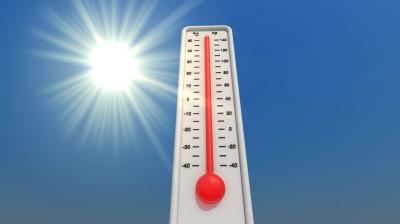New study shows Earth energy imbalance

The Earth climate system is out of energy balance as a result of human-induced climate change. Heat has accumulated continuously over the past decades, warming the ocean, the land, the cryosphere, and the atmosphere.
A new study, ‘Heat stored in the Earth system 1960-2020: where does the energy go?’ shows that the Earth Energy Imbalance continues to grow, and has risen by nearly 50% over the past 14 years in comparison to the amount accumulated over the last half of a decade.

The Earth Energy Imbalance (EEI), the difference between the amount of energy from the sun arriving at the Earth and the amount returning to space, serves as a fundamental metric to allow the WMO co-sponsored Global Climate Observing System (GCOS) to assess how well the world responds to the task of bringing climate change under control. The recently published 2022 GCOS Implementation Plan highlights the importance of regularly assessing the gaps in the observing system underpinning EEI estimations, and proposes actions to address them.
The international multidisciplinary study is published in Earth Systems Science Data, a prominent open-access journal of Copernicus Publications. Its is led by Karina von Schuckmann of Mercator Ocean International, which contributes to WMO’s State of the Global Climate reports.
Researchers (nearly 70 from dozens of institutes across 15 countries) access careful calibrated cross-checked well-documented data from the ocean, land, ice and atmosphere to conclude:
The Earth has accumulated nearly 0.5 watts (0.48 + 0.1) over every square meter of Earth’s surface over the past 50 years (since 1971);
- More recently (2006 to 2020), heating increased to more than 0.75 watts (0.76 + 0.2) per square meter;
- Most heat entered the ocean (89%);
- Remaining global heat went into land (6%), ice (4%) and atmosphere (1%);
- Global assessment of energy gained and disbursed represents a fundamental metric of changing climate and its implications while warming the ocean, the land, the atmosphere and the cryosphere; and
- Assessment efforts such as these require sustained international cooperation on monitoring and research.
"The Earth heat inventory in this study is underpinned by worldwide multidisciplinary collaboration and demonstrates the critical importance of concerted international efforts for climate change monitoring and community-based recommendations and we also call for urgently needed actions for enabling continuity, archiving, rescuing, and calibrating efforts to assure improved and long-term monitoring capacity of the global climate observing system,” write the authors.
WMO’s State of the Global Climate 2022 report, which will be released 21 April, will highlight key climate indicators including temperatures, ocean heat and acidification, sea level rise and sea ice.










